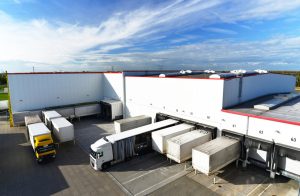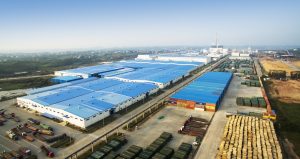Is the death of the warehouse greatly exaggerated?
Is the death of the warehouse greatly exaggerated?
WMS Warehouse Management Software
Some businesses may not need a warehouse for inventory storage but…
 Supply chains have become leaner as businesses remove inventory to reduce costs and cash tied up in unsold items. The challenge is to reduce inventory without compromising meeting customer expectations and fulfilling orders. It could in theory be possible to remove so much inventory from the supply chain that the warehouse becomes redundant. With modern systems it is easy to make an item to order and deliver it direct to the customer at a specific time and place.
Supply chains have become leaner as businesses remove inventory to reduce costs and cash tied up in unsold items. The challenge is to reduce inventory without compromising meeting customer expectations and fulfilling orders. It could in theory be possible to remove so much inventory from the supply chain that the warehouse becomes redundant. With modern systems it is easy to make an item to order and deliver it direct to the customer at a specific time and place.
In reality the warehouse fulfils an important role. If nothing else it offers a buffer between producer and end-user, as the most efficient way to produce many items is in bulk. That is probably true everywhere but especially for those choosing to manufacture overseas with the consequent long lead times. While savings in overseas labour and production costs outweigh international transport costs this globalisation will continue. The warehouse manages the onward supply of incoming items in smaller volumes to another business or direct to customer. Buffering also provides some – but not total – resilience against disruptions caused by bad weather and other unforeseen events.
“There’s no need to ever visit a warehouse and there are plenty of examples of this type
of supply chain. That might work for high value bespoke items but it is hard to see it being
suitable for most consumer products and even harder to see how that might change.”
 Just build bigger “sheds”. Despite this we are seeing yet another revolution. For years the trend was to build bigger “sheds” to serve as regional or National Distribution Centres (NDCs). Built to scale they benefitted from economies derived from centralisation of infrastructure, and resources. The internet and eCommerce changed that and the Covid-19 pandemic arguably drove it even harder with increased numbers of home workers. With customers increasingly expecting same day and next day delivery the few-and-large model is no longer optimal. Instead, there is a significant move towards small-and-local (or large and local in Amazon’s case) as businesses seek to service customers within a few miles and minutes.
Just build bigger “sheds”. Despite this we are seeing yet another revolution. For years the trend was to build bigger “sheds” to serve as regional or National Distribution Centres (NDCs). Built to scale they benefitted from economies derived from centralisation of infrastructure, and resources. The internet and eCommerce changed that and the Covid-19 pandemic arguably drove it even harder with increased numbers of home workers. With customers increasingly expecting same day and next day delivery the few-and-large model is no longer optimal. Instead, there is a significant move towards small-and-local (or large and local in Amazon’s case) as businesses seek to service customers within a few miles and minutes.
“It really doesn’t matter where an item is located because, if properly configured, the WMS
will simply treat it as a “black box” to be tracked as it moves through the supply chain.”
These smaller warehouses still need replenishing. That could easily be from the centralised NDC but it may be that businesses find ways to eliminate these and introduce new networks with major suppliers offering the warehouse component. Could this, shorter lead times, and the need to reduce carbon emissions across the supply chain create opportunities to manufacture closer to home? It would be nice to think that the need for warehousing will decline because hats are made in Stockport and shoes are made in Northampton but how realistic is that?
 Where does this leave the stock or warehouse management system? In reality, the best ones will be flexible and scalable enough to service pretty much any model that the market chooses. It really doesn’t matter where the item is located because, if properly configured, the Warehouse Management System will simply treat it as a “black box” to be tracked as it moves through the supply chain. Along the way the WMS will, with other business applications, make decisions to ensure the item is available for order and delivered on time. And while it’s a well-established WMS model to utilise a separate application at each site, a single application could also manage multiple sites.
Where does this leave the stock or warehouse management system? In reality, the best ones will be flexible and scalable enough to service pretty much any model that the market chooses. It really doesn’t matter where the item is located because, if properly configured, the Warehouse Management System will simply treat it as a “black box” to be tracked as it moves through the supply chain. Along the way the WMS will, with other business applications, make decisions to ensure the item is available for order and delivered on time. And while it’s a well-established WMS model to utilise a separate application at each site, a single application could also manage multiple sites.
Joe O’Shea, Director, Principal Logistics Technologies
Previous Article
Careers for WMS and SCM ExpertsNext Article
Document Imaging & ScanningWe'll assume you're OK with this, but you can opt-out if you wish.Accept Reject Read More






